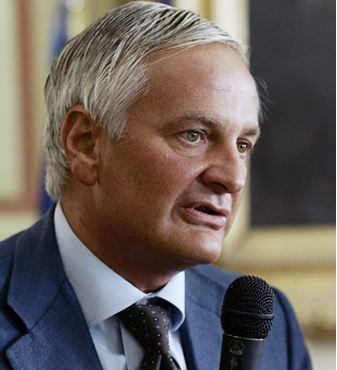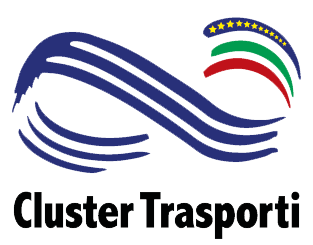The challenges and technologies for sustainable urban mobility: President Ennio Cascetta at the A&T Fair in Turin

Published 7 April 2022
The challenge for the urban mobility of the future will be to transport ever greater flows of people and goods in a widespread and sustainable way.
Ennio Cascetta, President of the Cluster Trasporti Italia, spoke about it in introduction to the work of the Round Table The system challenges and technologies for sustainable urban mobility, organized as part of the Automation & Testing (A&T) fair in progress in Turin until 8 April, dedicated to innovation, technologies, reliability and 4.0. skills. The road of urban mobility towards sustainability – explained Cascetta – passes through the new possibilities offered by technology. And this is a sustainability that we must consider declined in three fundamental meanings:
Environmental: it concerns the fundamental issue of compliance with the objectives of the EU Commission and the UN on the reduction / elimination of global (CO2) and local (PM10, noise emissions) emissions.
Social: transport plays an important role for equity and inclusion, having to guarantee the right to mobility of people, and for the impact it can have on health (accidents, cardiovascular diseases, stress), for costs borne by families and the working conditions they entail.
Economic: finally, it is necessary to aim for maximum efficiency in the production of transport services, an optimal use of public resources for infrastructures, and the activation of new markets for mobility.
Avoid, Shift, Improve
The achievement of the sustainability objectives is essentially linked to the implementation of ASI policies, based on the concepts of Avoid, Shift, Improve:
- Reduce the need to move or the length of the move
- Orient the modal shift towards more efficient and green types of transport
- Improve the efficiency of transport services thanks to new technologies
As regards the first aspect, measures that can be implemented in the short term are the promotion of smart working and all those actions that can help reduce or rationalize travel, such as a reasoned e-commerce.
In the medium to long term, however, we can imagine the intervention by the administrations of appropriate Transit Oriented Development (TOD) policies to increase the population density near the transport terminals or the promotion of proximity services and “fractal accessibility”: an example is the paradigm of the “city of 15 minutes” which provides the possibility for the user to meet their basic needs a few minutes – on foot or by bike – from the place of residence, so as to encourage forms of soft mobility.
Naturally, the development of policies of this type will require a reasoning on which services are to be considered as essential and, therefore, to be rendered in proximity; there will be the unknown as to whether essential services today will continue to be so tomorrow; some urban models will lend themselves more to this transformation than others.
As regards the modal shift towards greener transport, the short-term measures include the promotion of forms of soft mobility (cycle and pedestrian, shared micro-mobility services, etc.), the improvement of the quality of the LPT service (greater frequency and punctuality of trips, fleet monitoring), parking rates for the most polluting vehicles, road pricing and trip pricing; modal and tariff integration; e-ticketing and infomobility services and increasingly massive and extensive adoption of the MaaS – Mobility-as-a-Service paradigm-.
The medium to long-term measures in this area concern the implementation of infrastructural interventions, such as the increase in kilometers of rail network, the construction of new railway and underground stations.
Finally, as regards the improvement of transport services through new technologies, the interventions to reduce emissions with the same modal choice are constituted by the adoption of incentives for the purchase of small and / or green powered vehicles or the increase in vehicle filling coefficient (eg incentives for car-pooling, preferential lanes for High-Occupancy Vehicles – HOVs).
Then there are measures to make traffic more fluid (C-ITS services), such as GLOSA – Green Light Optimal Speed Advisory and CACC – Cooperative Adaptive Cruise Control.
The Seventh Transport Revolution
To complete the seventh transport revolution, however, the enabling technological innovations will be fundamental, which will have to take place along three main lines:
1) Transport decarbonisation
È in corso una trasformazione dei motori di trazione, delle fonti di energia, delle reti di approv A transformation of traction motors, energy sources, supply networks is underway. The global, European and national goals point to 2050 as a carbon-neutral goal.
The closest targets are a 15% reduction in CO2 emissions by 2025 and at least 30% by 2030. The global, European and national goals point to 2050 as a carbon-neutral goal. The closest targets are a 15% reduction in CO2 emissions by 2025 and at least 30% by 2030
2) Autonomous and connected vehicles
Introduction of Information and Communication Technologies (ICT), digitalization of automation, artificial intelligence, 5G technology.
A self-driving car, equipped with a combination of sensors, cameras, radar and artificial intelligence (AI), allows you to travel without the need for human intervention.
The spread of autonomous and connected vehicles has the potential to profoundly change costs, performance, availability, ownership and use patterns for travelers and freight.
Innovation also concerns infrastructures (smart roads).
3) New mobility services
Technological innovations related to ICT and the APP-economy make possible new mobility and mobility services that are radically transforming mobility services. These are the new services of MaaS and Infomobility, which describe a new way of moving by replacing the concept of owning a vehicle, with that of a mobility service.
This scope includes:
Information services (waze, Google maps, moovit, Citymapper), vehicle sharing apps, Uber
Smart pricing, as the road pricing, road use toll in relation to congestion levels and time slots (e.g. London), vehicle type Euro (e.g. Milan) and trip pricing, the toll for the entire journey in relation to congestion (e.g. Singapore), to the alternatives of path and mode available.
Smart mobility, such as booking and purchasing travel with bike sharing, own car, car pooling, public transport; possibility of building alternative routes; pay tickets and parking fees.
Smart control, finally, it is possible to use new ICT, IoT and RFiD technologies for fleet management (AVL, optimization of hybrid vehicles, etc.), accesses in specific areas according to congestion / hours of the day, to promote safe and green behaviors through insurance bonuses / incentives.


